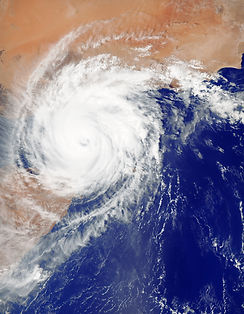top of page
Why do the arts matter after a hurricane? The digital exhibit “Coasts in Crisis” answers this question with art, music, poetry, and conversation from Greater Caribbean artists who experienced Hurricanes Irma and Maria in 2017. Based on an event held at the University of Virginia in 2019, “Coasts in Crisis” features creative resistance to global climate change and failed governmental hurricane responses.
In an age of rising global sea levels and temperatures, resilience to hurricanes is a central concern for coastal communities, from the Eastern Shore of Virginia to the islands of the Caribbean. This project explores the role of the arts in the Atlantic Hurricane Zone.
Local and federal governments rarely consider the arts to be an essential service in the aftermath of hurricanes. Yet a closer look at resilience in storm-damaged communities challenges that assumption. Indeed, music, art, literature and dance offer important forms of creative resistance in post-hurricane societies. First, they provide a manner of coping with storm-related trauma, both for the creators and for those who experience the works. Second, art creates a sense of community by raising awareness about shared experiences, particularly in isolated areas. Third, art consoles, gives pleasure, and offers an escape from disaster; when most of Puerto Rico went without power for three to eight months after Hurricane Maria, people began reading and attending museum and music events rather than looking at screens. Entertainment functions as a balm and as a celebration of life amid the loss. Finally, the arts can serve as a call to political action. This is particularly true in areas in which economic crisis, governmental ineptitude, and environmental injustice exacerbate the suffering of coastal communities.
Charlotte Rogers
Assistant Professor of Spanish
University of Virginia
cwr4m@virginia.edu
Author of:
Jungle Fever: Exploring Madness, Medicine and Writing in Twentieth-Century Tropical Narratives, Vanderbilt University Press, 2012.
https://www.vanderbilt.edu/university-press/book/9780826518323Mourning El Dorado: Literature and Extractivism in the Contemporary American Tropics, University of Virginia Press, 2019.
https://www.upress.virginia.edu/title/5316
ODE TO THE FALLEN TREES
“Ode to the Fallen Trees” (“Oda a los árboles caídos”) is used by permission from Alfonso Fuentes. The clarinetist is Oskar Espina Ruiz. A brief description: Pianist and composer Alfonso Fuentes Colón emerged from his home in Puerto Rico the day after Hurricane María in 2017 and immediately noticed the extent of the ecological devastation. He was particularly struck by how the storm felled trees and left their branches blackened and stripped of leaves. In the days and weeks following the hurricane, he wrote “Ode to the Fallen Trees” without electricity or running water. He even waited in line at Sam’s Club beginning at 4 am to buy a battery-operated keyboard and a headlamp so he could play what he was composing. “In the middle of composing the piece, I began to cry,” Fuentes says, “I wrote because I felt sorry for the trees; I wrote to save myself from the sadness.”
COASTS IN CRISIS: ART AND CONVERSATION IN THE AFTERMATH OF RECENT HURRICANES

(Sept 19, 2019) brings together musicians, writers, and artists who have been affected by hurricanes Harvey, Irma and Maria in 2017 and 2018. The invited artists from the Caribbean and the United States will show or perform their work and have a public dialogue with the aim of better understanding the importance of the arts in the aftermath of hurricanes. Following major disasters, the arts create community, protest injustice, and offer catharsis for both artists and the public. More broadly, “Coasts in Crisis” aims to show how people and their environments are deeply connected across racial, linguistic, and national boundaries.
bottom of page

